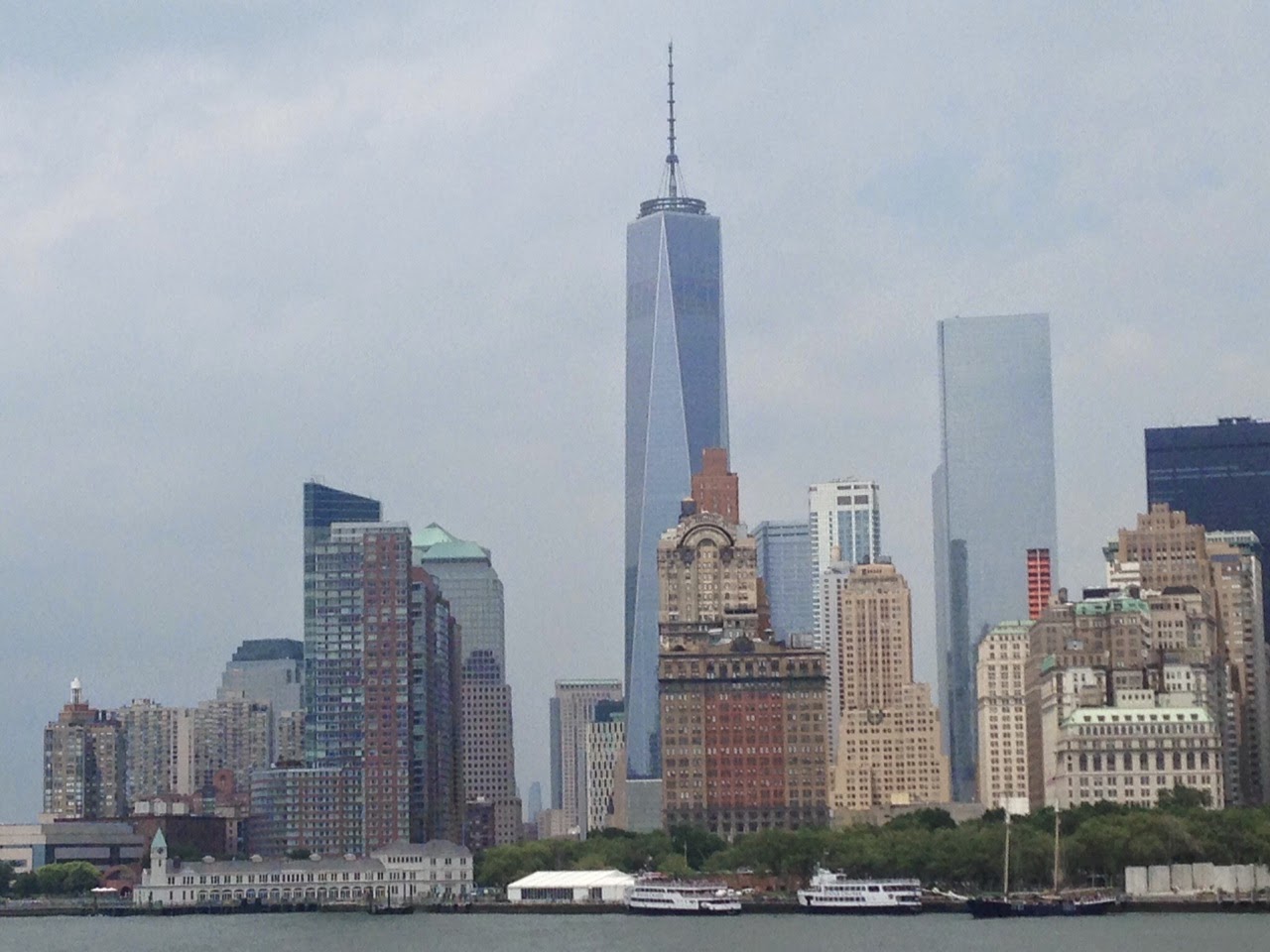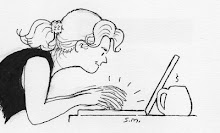 |
| Charles Champlin, 1926–2014 |
This past weekend in Los Angeles, we celebrated the life of my dad, former Los Angeles Times arts editor and film critic Charles Champlin, at the Directors Guild Theater. Dad died in November, after a nearly decade-long struggle with Alzheimer's, throughout which he remained his kind, good-humored, gentlemanly self. Macular degeneration had already robbed this writer, reader, and film lover of his eyesight, a cruelty that he managed with unfathomable grace—and by writing about it, in his book, My Friend, You Are Legally Blind. Dad's legacy, in addition to his storied career and his prolific and elegant writing, includes a 66-year marriage to our miraculous mom, six children, 13 grandchildren, and seven great-grandchildren. As 30+ family members gathered for Thanksgiving dinners, Dad liked to say to Mom, "Peg, what have we wrought?!" You wrought good, Dad. These are the remarks I wrote for his memorial service:
Most mornings when I was little, I
woke to the sound of machine-gun fire. That would be Dad, typing furiously on
his IBM Selectric as he wrote his review of the film he’d seen the night before.
Within the hour, he’d be showered, dressed, dictating the piece into the kitchen
telephone, then following the review down to the L.A. Times in his Triumph TR-250.
If ever a child had a role model
for just plain getting the job done, with style and without whining, it was
Dad.
And if there was ever an example of
both a writer’s art and a writer’s craft, it was Dad. He was the Fred Astaire
of writers: With the hard work and blisters kept out of sight, he made it look
effortless.
Having a film critic for a father has obvious benefits—like impressing your
high school friends in 1977 by seeing Star
Wars two weeks before its release, or getting to go with Dad to the Academy
Awards as he took each of us kids, democratically, in turn.
Having a writer for a father has other benefits—less obvious, maybe, but
deeper and longer-lasting.
Learning the skill of thoughtful
observation, for example, so that you see not just who or what is right in
front of you, but what’s around the edges and what’s underneath. Dad had a particular
gift for that—whether it was understanding a filmmaker’s intentions and not
just their final, perhaps studio-edited product; or whether it was listening to one of
his many children or grandchildren and getting straight to the heart of what
was on their mind, and not just in their fumbling words.
That skill of listening and seeing
between the lines was one he learned early, in his hometown of Hammondsport,
New York, population 1200. In his book, Back There Where the Past Was, Dad wrote:
“My maiden great-aunts, my grandmother Masson, and my mother…had what I remember now as semaphore eyebrows, a secret communications system for dealing with things my brother and I were not supposed to hear or know about.“ ‘How is dear Fannie Cameron?’ one of the aunts might ask my grandmother.“ ‘Much the same,’ my grandmother would reply, with a theatrically eloquent lift of her eyebrows. Even then I understood that, Mrs. Cameron being in excellent health, the import of the eyebrowing was that Mr. Cameron…was either drinking again or philandering again or both. I knew this from listening a lot to grown-up conversations when I was not thought to be listening. Even then I may have been aiming for a career in journalism without knowing it.”
Of course, the other great benefit
of having a writer-dad was being given, on a daily basis, the gift of language.
Dad loved words. He loved the infinite variety of them, and the Play-Doh
quality of them. Puns may be the lowest form of humor, but they were in high
demand around the Champlin dinner table. In his writing and even in his casual conversation,
Dad illustrated for us not just the power of words, but the acute power of the un-obvious word, the
unexpected phrase.
In his review of Mel Brooks’s Blazing Saddles, Dad wrote:
“[This] mock-down, knock-down, bawdy, gaudy, hyper-hip burlesque western is irreverent, outrageous, improbable, often as blithely tasteless as a stag night at the Friar’s Club and almost continuously funny…It is to Zane Grey as Little Annie Fanny is to Daddy Warbucks’ wide-eyed ward.”
Of Robert Altman’s Nashville, he wrote: “…Altman abhors a
vacuous screen, and he can make almost anything interesting on it…[H]is
instincts for that existential half world between security and failure are
sure, accurate and special, and he is never dull.”
I would say the same for Dad.
Even when macular degeneration left
him legally blind and Alzheimer’s gummed up the works, he never lost his true
vision, or his gift for the unexpected insight.
One day, when I made the
unfortunate choice to wear blue jeans and
a denim jacket, Dad looked at me through his peripheral vision and said,
“You’re looking very agrarian today,
Susan.”
But the most remarkable gift of all
about Dad is that through everything—in his personal life and his professional
life, on television or in the grocery store, in blazing health and while
enduring insidious disease—Dad was a gentleman. He was, right down at his core,
a fundamentally kind and generous human being. He was a small-town boy who
maintained his small-town decency and manners, even in a much bigger town that
didn’t often honor those things.
As our Dad and grandfather, and as
a husband to our mighty Mom, he was gentle, proud, generous, a wise and
encouraging counselor, wonderfully silly, and an
excellent cook—as long as your tastes ran to beer bread and frozen peas. He was
also deeply loving. In his later years, when certain phrases began to be
repeated with regularity, the phrase we heard most often, as his hand crept
across the dinner table toward Mom’s hand, was, “Have I ever told you I love
you?”
We’re especially lucky in our
family to have had a writer for a father, because we have his stories. First we
had them over family dinners, where all heads would be angled toward the west,
where Dad sat at the head of the table and told us the stories of Hammondsport
and Smellie’s Drugstore and the office he shared with David Snell at Life magazine, which Dave had named the
“Hotel Plunge” after the phrase made famous by tabloid newspapers—as in “Sailor Dies in Hotel Plunge,” “Tourist Dies in Hotel Plunge.” And, of course, there
was the story we loved best: the family legend of how Dad met Mom.
But we Champlin kids are luckier
than most, because now we have those stories in his books, which his great- and
great-great-grandchildren can read when they come to that point in their lives
when they realize what they’ve lost—and also what they gained, what we all
gained, on that day in 1946 when Charles Champlin arrived at the Hammondsport
library to pick up his grandmother and met a beautiful young brunette named
Peggy Derby.
I know I have told you Dad, but I’d like to tell you again: I love you.





























































